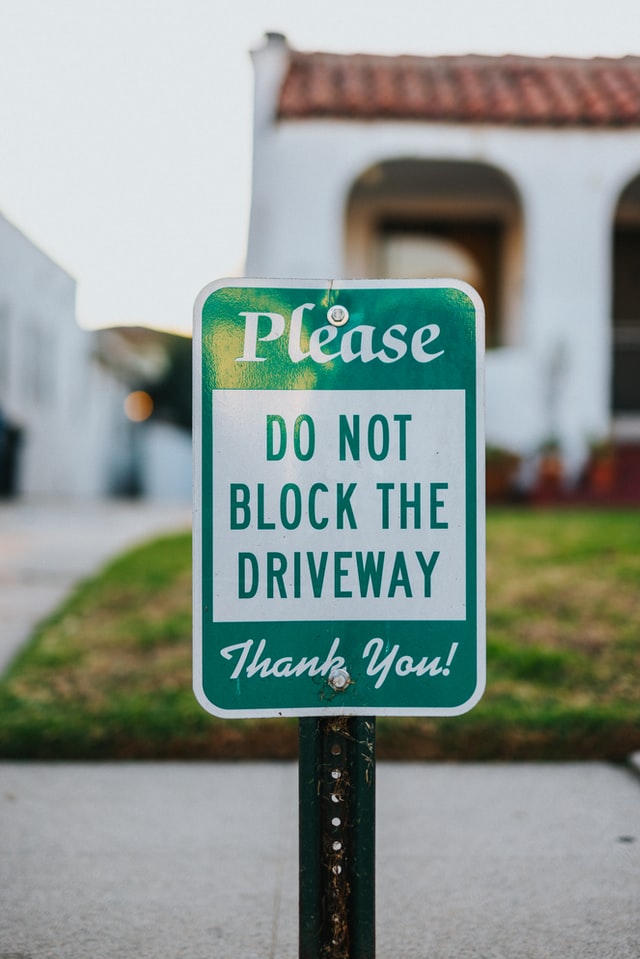Sharing a driveway with a neighbor can be difficult, especially if the neighbor is less than reasonable.
One area of neighborly dispute can arise if the neighbors share a driveway and the easement which created this shared space is not defined in terms of its size, width and/or use.
In Pennsylvania, we have a variety of easements ranging from permissive to prescriptive. However in the case of shared driveway, these easements are typically created in a congenial setting such as when the owner of one hundred acres of land wishes to sell, for example, twenty of those acres as a means of generating income.
Once the owner finds a prospective buyer, they agree to “share the driveway” so that the buyer may have access to the newly created parcel.
Trouble is, ownership of land changes through the natural progression of time. Thus, the original owners who created the easement will not always be the individuals bound by the terms they initially agreed upon.
Instead, these types of permissive easements often “run with the land” meaning fifty years from now, there will be new owners of both parcels who must still abide by the terms of the easement.
Further, no matter how much the now owner of the 80 acres doesn’t like the owner of the 20 acres; it does not give the owner of the 80 acres the right to dictate or unilaterally change the terms of the easement.
As such, if you are interested in purchasing property which involves a shared driveway, it is a very good idea to learn up front what your rights, obligations, and opportunities are for relief before closing on the property.
The problem of a shared driveway between neighbors can become even more complex when the metes and bounds of the driveway are not defined (known as a geographically undefined easement) in the legal instrument (deed or right-of-way agreement) which first created the easement.
However, it is important to note that just because a geographically undefined easement does not possess a “metes and bounds” legal description, it does not mean it cannot be enforced.
Instead, the holder of a geographically undefined easement has the right to an area which is reasonable for its intended use.
Thus, in order to determine the size and scope of a geographically undefined share driveway easement, you must determine the intention of the parties, at the time the easement was created.
To determine the intention of the parties at the time the easement was created, the following tasks must be accomplished:
- A fair review and legal interpretation of the language used to grant the easement;
- Identification of the initial intent of the parties;
- The review of other public records to assist in defining the intent of the initial parties, especially if they are deceased or cannot be located.
Further, when the terms of an expressly granted easement are general, ambiguous, and not defined by reference to the circumstances as they existed at the time the easement was created, the express easement will be construed in favor of the owner of the easement; known as the grantee or their heirs, successors, and assigns who now own the property utilizing the easement.
Finally, only the attending circumstances known to the parties at the time the easement was created, not the circumstances as they exist now, are relevant when construing a grant of an easement.
In light of the above, the width and length of your easement (shared driveway) will be such width as (a) the language of your easement supports and (b) a width that was suitable and convenient for the usage intended by the original parties who created the easement for access to your property.
Thus, determining the answer to this question can become cumbersome as it will likely involve a review of your title, the deed or legal instrument which created the easement, and a review of witnesses who can speak to the initial intent of the parties whom created the easement in the first place.
If you are involved in a neighbor dispute over a shared driveway, feel free to contact Covalt Law in order to set up an initial consultation so you can determine your next steps as you attempt to resolve this stress-producing matter.
LEGAL DISCLAIMER:
This blog positing is made available for educational purposes only as well as to provide Central Pennsylvanians with general information and a general understanding about this area of Pennsylvania law, not to provide specific (or any) legal advice. Use of this blog does not create an Attorney-Client Relationship with the publisher, Covalt Law, or Nittany Settlement Company. This blog is for general informational purposes only. Covalt Law is a law firm in State College, Pennsylvania and some of the information within this blog relates to legal topics. Covalt Law, LLC does not offer or dispense legal advice through this blog or by e-mails directed to or from this site. By utilizing this blog, the reader agrees that the information contained herein does not constitute legal advice or other professional advice and no attorney-client relationship or other relationship is created between the reader and Covalt Law, Nittany Settlement Company, or its attorneys. Moreover, this blog is not a substitute for obtaining legal advice from a qualified attorney licensed in your state or jurisdiction. The information on this blog may be changed without notice and is not guaranteed to be complete, correct, or up-to-date. While the blog is revised on a regular basis, it may not reflect the most current legal developments or law in your jurisdiction. The opinions expressed at or through the blog are the opinions of the individual author and may not reflect the opinions of the firm or any individual attorney.
Additionally, to ensure compliance with requirements imposed by the U.S. Internal Revenue Service in Circular 230, we inform you that any tax advice contained on this site (including any links provided) is not intended or written to be used, and cannot be used, for the purpose of (i) avoiding penalties under the U.S. Internal Revenue Code or (ii) promoting, marketing, or recommending to another party any transaction or matter addressed in this communication.







